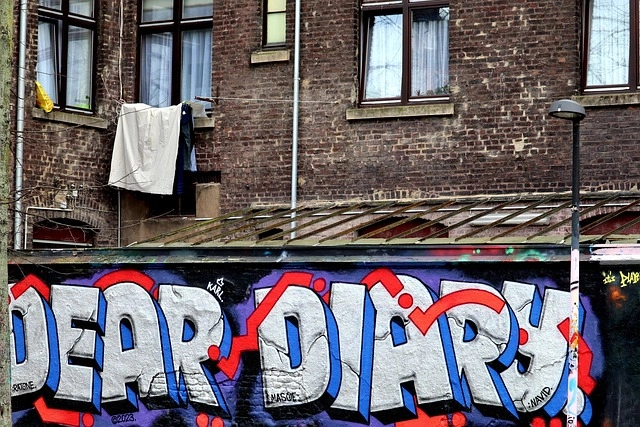Cacharel Perfume has redefined the fragrance industry by introducing neutral, unisex scents that appeal to all genders, breaking free from traditional gender-specific aromas. Their iconic fragrances blend fresh citrus and warm woody notes, challenging stereotypes and fostering inclusivity in a historically biased market. Modern marketing strategies further emphasize this shift, presenting Cacharel's cologne as androgynous, appealing to diverse consumers beyond binary gender identities.
“Unveiling the true nature of fragrance is a captivating journey, especially when exploring how societal perceptions shape our choices. This article delves into the intriguing question: does a perfume lean towards a masculine or feminine identity, or can it transcend these norms? We examine Cacharel Perfume as a case study, analyzing how its scent defies stereotypes and appeals to all genders. By exploring gender types in perfumery, marketing tactics, and consumer experiences, we uncover the evolving landscape of neutral fragrances.”
- Unveiling the Scent's Identity: Cacharel Perfume
- Gender Stereotypes and Fragrance Perception
- The Evolution of Perfumery: A Neutral Approach
- Marketing Strategies and Consumer Perception
Unveiling the Scent's Identity: Cacharel Perfume

In the realm of fragrances, Cacharel Perfume has long been a symbol of elegance and sophistication. This iconic brand has successfully challenged traditional gender norms associated with scents, offering a versatile aroma that transcends the boundaries of masculinity and femininity. By creating fragrances that appeal to all, Cacharel has established itself as a truly neutral option in the market.
Unveiling the essence of Cacharel Perfume is like exploring a symphony of notes, where each layer adds complexity without adhering to any specific gender stereotype. The brand’s signature blend often incorporates fresh and citrusy top notes, intertwined with warm, woody base notes, creating a captivating scent that appeals to both men and women alike. This balance allows individuals from all walks of life to embrace the fragrance, making Cacharel Cologne a popular choice for those seeking a versatile and inclusive aroma.
Gender Stereotypes and Fragrance Perception

Gender stereotypes have long played a significant role in shaping our perceptions of fragrance, often associating certain scents with masculinity or femininity. This bias can influence how we interpret and choose perfumes, leading to a fascinating interplay between scent and societal norms. For example, Cacharel Perfume, known for its unique fragrances, might be perceived differently based on these stereotypes. A perfume like Cacharel Cologne, with its fresh and woody notes, could be instantly labeled as masculine due to traditional associations of cologne with male fragrance preferences.
However, the beauty of perfumery lies in its ability to defy these stereotypes. Many modern scents challenge the norm by creating fragrances that transcend gender, appealing to a diverse range of individuals. By embracing complexity and uniqueness, perfumes like Cacharel’s can appeal to both men and women, proving that scent is not solely defined by gender. This trend towards neutral and unisex fragrances reflects a broader cultural shift, allowing people to express their individuality without conforming to outdated stereotypes.
The Evolution of Perfumery: A Neutral Approach

The world of perfumery has witnessed a significant evolution, reflecting societal shifts towards embracing fluid gender norms. Traditionally, fragrances were often marketed and categorized along gender lines, with certain scents considered masculine or feminine. However, this binary approach is increasingly being challenged, giving way to a more neutral and inclusive perspective. This transformation can be seen in the popularity of unisex perfumes that transcend conventional stereotypes.
One notable example is Cacharel Perfume, which has gained acclaim for its ability to appeal across genders. By moving away from the typical masculine or feminine scent profiles, Cacharel offers fragrances that are nuanced and versatile. Similarly, while Cacharel Cologne may carry certain attributes traditionally associated with male fragrances, it also draws on notes that defy strict categorization. This neutral approach not only caters to individuals who identify beyond the binary but also encourages a more diverse and accepting beauty culture.
Marketing Strategies and Consumer Perception

In the realm of marketing, the presentation of a product plays a pivotal role in shaping consumer perception. When it comes to fragrances, brands often employ strategies that emphasize either masculinity or femininity, creating a strong association in the minds of potential buyers. For instance, Cacharel Perfume, known for its timeless elegance, has historically leaned towards a more feminine audience with its floral and fruity notes. However, modern marketing campaigns have started to blur these lines, presenting scents as universally appealing.
This shift is evident in the rebranding of traditional Cacharel Cologne, now marketed as a versatile fragrance for all genders. By challenging conventional norms, brands like Cacharel aim to cater to a diverse range of consumers who appreciate neutral or androgynous scents. This strategy not only appeals to individuals who identify beyond binary gender categories but also encourages a broader appeal, fostering a more inclusive environment in the fragrance industry.
